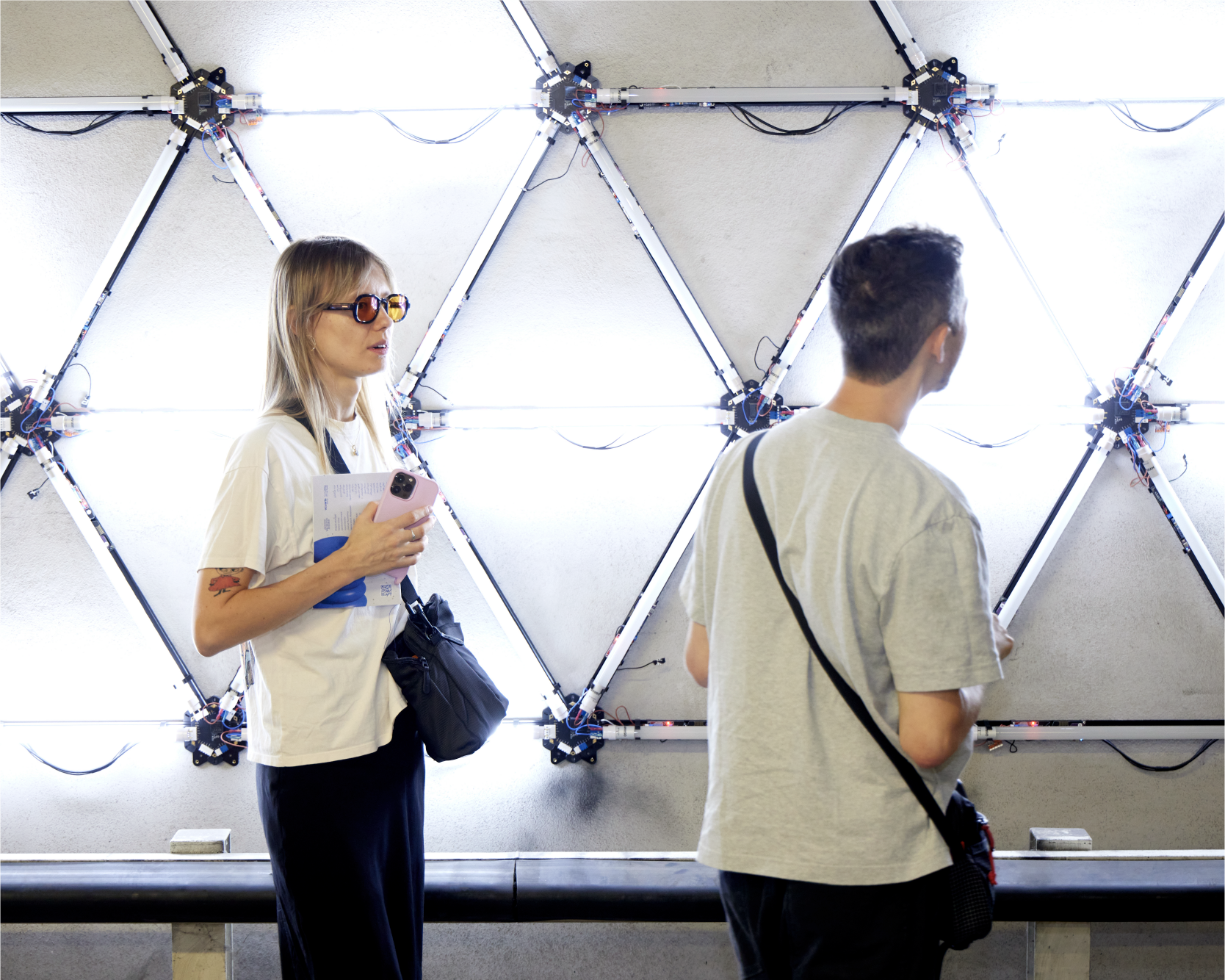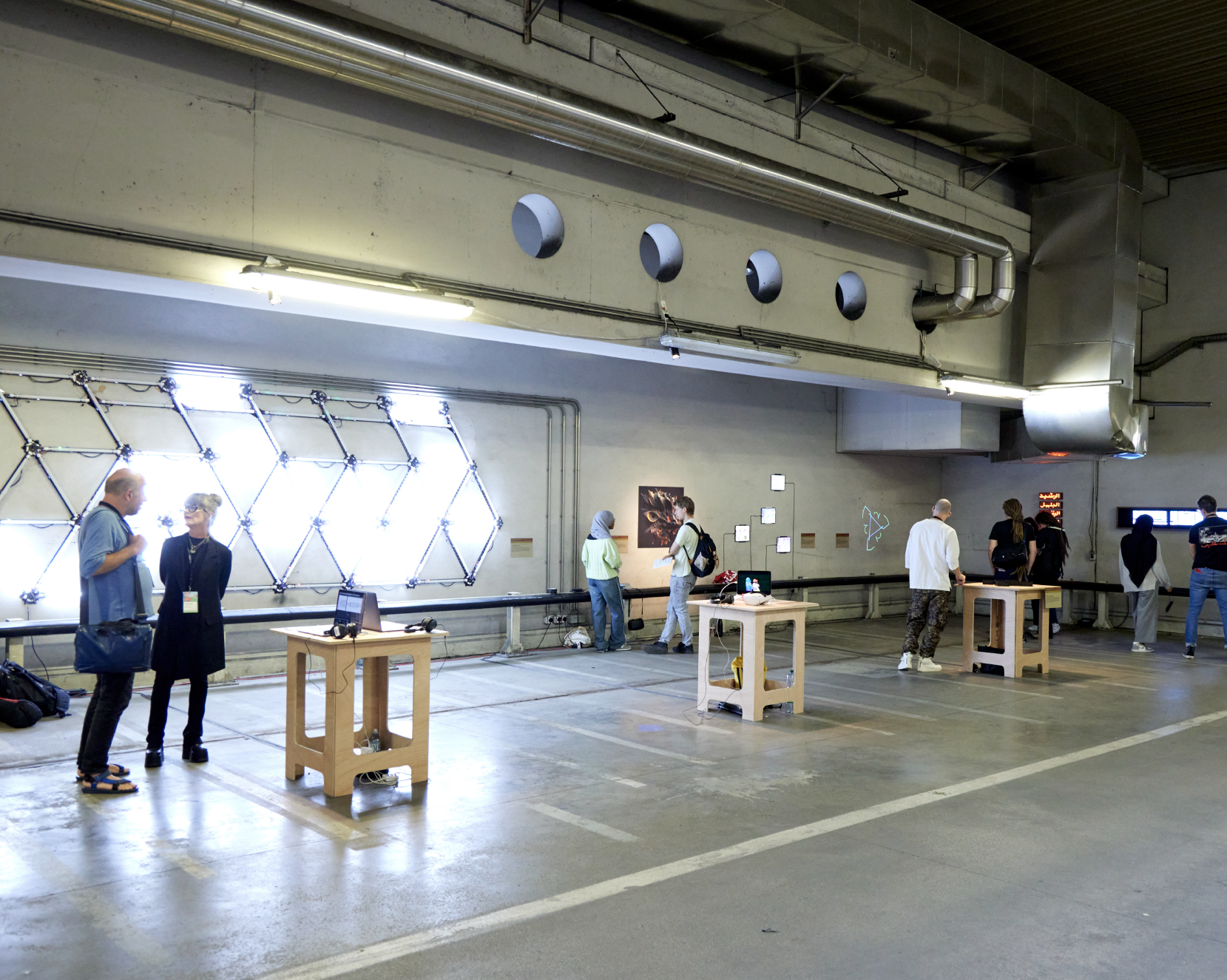PRECEDING
EMPTINESS
#ELECTRONIC-ART
#ARS-ELECTRONICA
2023





Throughout its history, the formal evolution of written language has been driven by the technology used to render that language, from cuneiform to stone-carved Roman capitals, and up to letterpress and pixels. In the last century, this phenomenon has accelerated rapidly with typography adapting to new display possibilities such as segmented LED displays in early electronics.
The locality of these innovations has been primarily situated in the west where the Latin typographic script is the predominant form of written language. The opportunities presented by these technologies generated pressure for alternative scripts such as written Arabic to conform to the formal constraints of these Latin-based technologies.
Preceding Emptiness is the latest light installation in a body of work imagining alternative typographic histories by constructing unconventional language display technologies. Here, a hexagonal segmented grid celebrates the formal potential of the Arabic language. The series of words on rotation display the Arabized terms of code statements for Arabic software tools that were first developed by Arab scientists and researchers in the 1980s. The words drive toward an unwritten landscape populated by unconventional technologies that, in turn, shape new typographic structures - a new symbiosis between technology, typography, and tradition.
By Levi Hammett, Hind Al Saad, and Mohammad Suleiman, with type design by Fatima Abbas.
The locality of these innovations has been primarily situated in the west where the Latin typographic script is the predominant form of written language. The opportunities presented by these technologies generated pressure for alternative scripts such as written Arabic to conform to the formal constraints of these Latin-based technologies.
Preceding Emptiness is the latest light installation in a body of work imagining alternative typographic histories by constructing unconventional language display technologies. Here, a hexagonal segmented grid celebrates the formal potential of the Arabic language. The series of words on rotation display the Arabized terms of code statements for Arabic software tools that were first developed by Arab scientists and researchers in the 1980s. The words drive toward an unwritten landscape populated by unconventional technologies that, in turn, shape new typographic structures - a new symbiosis between technology, typography, and tradition.
By Levi Hammett, Hind Al Saad, and Mohammad Suleiman, with type design by Fatima Abbas.